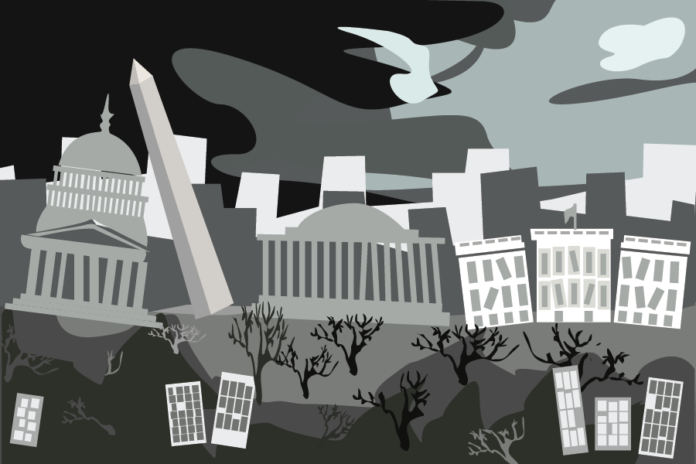The Predictive Powers of Dystopian Writers
Dystopian novels captivate audiences within worlds fraught with totalitarian regimes pursuing an incessant march of order. The most formidable dystopian works act as cautionary tales exhibiting our future’s most disturbing possibilities. Renowned authors from George Orwell to Ray Bradbury were historians of the human psyche, carefully observing the ebbs and flows of humanity’s imperfect and often terrifying tendencies. They had an uncanny ability to digest and repackage these dispositions in jarringly raw forms. With this gift, they cultivated their stories, linking societal trends with envisioned technologies to make shockingly accurate predictions.
Aldous Huxley’s timeless 1932 novel “Brave New World” captures the nature of predictive insight. The novel’s setting is dominated by hedonism, order and mindlessness. The keystone technology keeping this society in equilibrium is called soma, a drug that cures all negative symptoms across the psychological spectrum. Characters reference taking soma to going on a holiday, creating an “impenetrable wall between the actual universe and their minds.” Openly advocated for by the government and used as an opiate for the masses, soma mechanically shepherds citizens throughout their lives.
Fifty years after the release of “Brave New World,” the life-changing pill Prozac was introduced. It was to be the king of all anti-depression drugs: a pleasure-creating, anxiety-freeing solution for people in psychological duress. Prozac is not the same as soma; however, it mimics many of soma’s mind altering qualities and, like soma, its use in addressing psychological issues has grown exponentially.
A study done by the Centers of Disease Control and Prevention reported that the rate of usage for antidepressants like Prozac has skyrocketed by 400% since 1988. In contrast to “Brave New World,” Prozac has been applied more cautiously and is oftentimes a godsend for people with certain psychological disorders, allowing them to functionally integrate within society.
On the flipside, Prozac is also frequently prescribed as a quick fix to problems that can and should be treated without artificially tampering in brain chemistry. Regardless, for 12.7% of Americans over the age of 12, portions of Huxley’s 90-year-old vision now play a distinguishable role in their lives.
Seventeen years following “Brave New World,” and in the wake of World War II, George Orwell released his classic “1984.” In “1984,” society is overseen by an omniscient surveillance system known as the telescreen. On the other side of the telescreen is the government’s authoritarian gaze, scrutinizing and documenting their citizens’ every move. The telescreen was wielded against society to maintain strict compliance and homogeneity, picking apart citizens’ habits and reporting irregularities. In 2019, across the Pacific Ocean, an almost identical surveillance technology is being developed and put to use.
Within China’s Xinjiang province, the Communist government has set up its own all-encompassing surveillance system to control and indoctrinate the Uighurs, China’s ethnically Turkish-Muslim minority. The technology was applied in response to Uighur rebellions against China’s ruling Communist regime. A recent article in The New York Times reports on the technology’s far-reaching capabilities.
“The system could retrieve the photo, home address and official identification number of a woman who had been stopped at a checkpoint on a major highway,” the article states. “The system sifted through billions of records, then displayed details of her education, family ties, links to an earlier case and recent visits to a hotel and an internet cafe.”
The government has tabs on every single Uighur in the area, coercing them into submission, while sending agitators to indoctrination camps.
Telescreens also echo the inner-mechanisms of the world’s largest corporations. Companies from Facebook to Google operate on similar life tracking systems to drive their profit engines, making money hand over fist on ads plastered throughout the internet. Customers are analyzed, broken down and synthesized into data that can be marketed to companies. Everything from travel, eating habits and, based on a new report from the Wall Street Journal, menstrual cycles have been catalogued for market research. Now even some of our beloved everyday use technologies emulate fabricated dystopian devices from the past.
Take, for example, the rise of the questionable AirPods, used to wirelessly sync to phones, laptops and even TVs. The premise for the AirPod was first conjured up in a book you probably read in your high school english class — Fahrenheit 451. Characters in this novel commonly used ear devices called seashells.
In the novel, Bradbury described their function as “little […] thimble radios tamped tight, [with] and an electronic ocean of sound, of music and talk.”
Seashells were the OG AirPods — much like AirPods, they prevented the user from being fully immersed in the present, wrapping them in an entertainment cocoon.
In retrospect, it’s quite astonishing to see the foresight of these visionary storytellers. Their ability to delineate future technologies grants them status as modern oracles. When looking back on society’s progression we can take heed of the lessons taught in these dystopian worlds. They are not simply pleasurable stories to enjoy, but touchstones for our trajectory.
When analyzing our society’s direction, we can scrutinize the use of such technology from the lens of the texts, weighing their benefits with their repercussions and perhaps taking a step back whenever our environment seems just a little too familiar.
Written By: Andrew Williams — arts@theaggie.org




